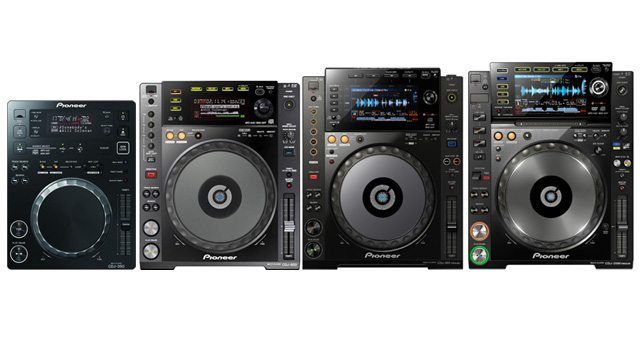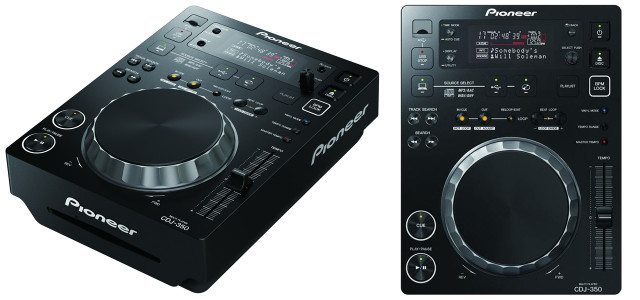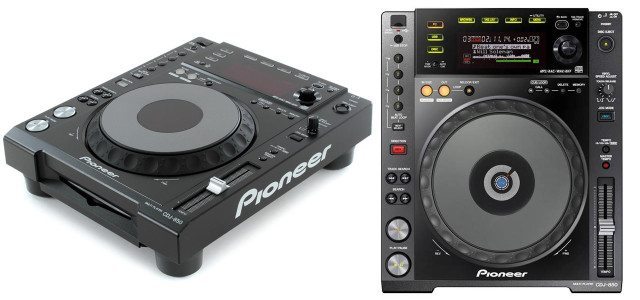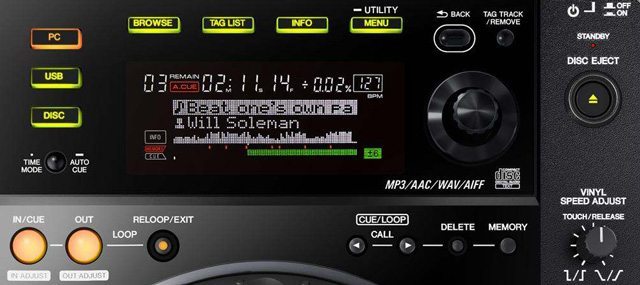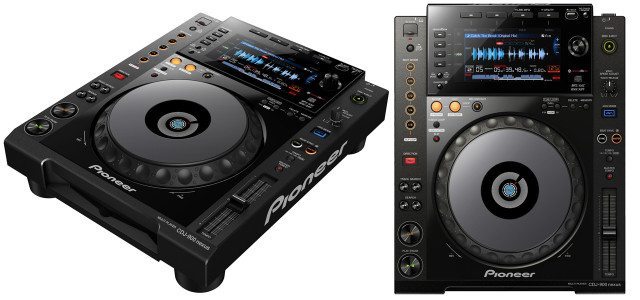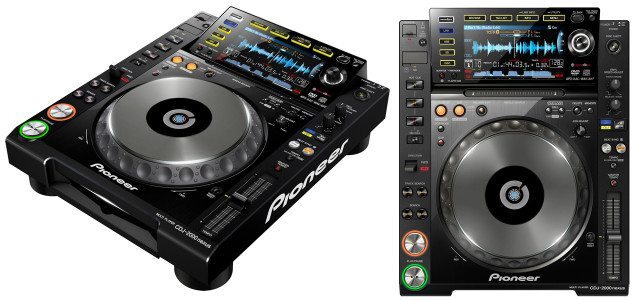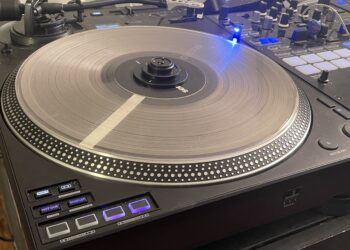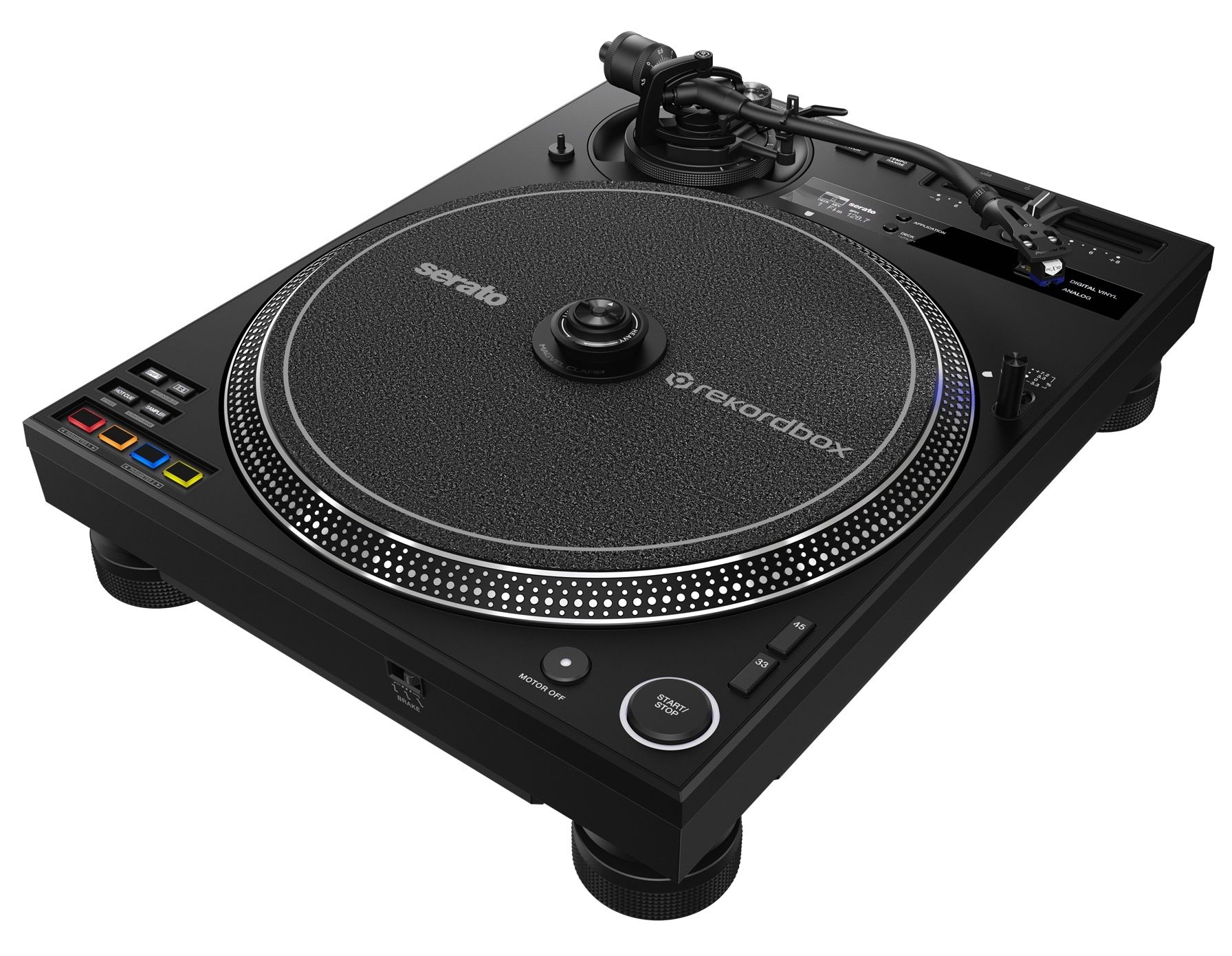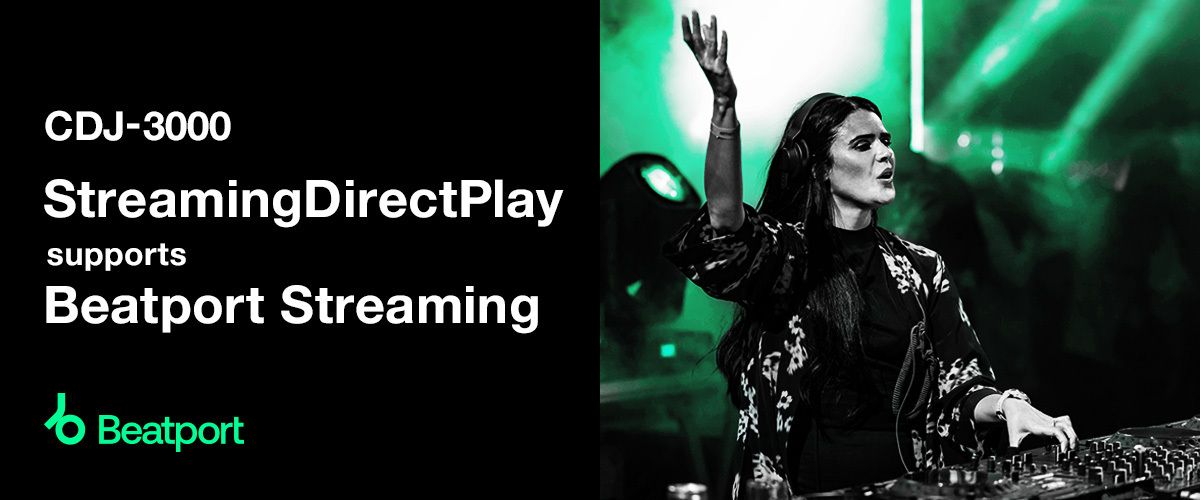With the launch of Rekordbox 3.0, Pioneer will not only further entrench their existing users, but also attract new users; perhaps even those who’ve only worked with software solutions in the past. Many DJs prefer the plug-and-play simplicity of the CDJ ecosystem containing no less than 4 models. For those looking to buy new decks or upgrade their existing kit this begs the question: Which CDJ is the right for you?
We’ll be reviewing the new version of Rekordbox soon, as part of our plans to expand our coverage of the Rekordbox ecosystem, once we’ve had plenty of time to put it through its paces. But one topic which comes up in the DJTT forum quite regularly is ‘which CDJ should I buy?’ So today we’re taking a look at the various options available to buyers. Do you really need the fancy features of a Nexus rig? Or will the budget models do the business for you? We’ll help you decide.
Why no Denon/Numark/Reloop/etc?
There’s no question, that in many parts of the world, the various models of Pioneer CDJs are very much the ‘standard’ when it comes to club and bar installations. If you are a working DJ, it is guaranteed that you will be presented with a pair to use at some point in your career.
That’s not to say that other brands of player don’t have their fans, or indeed advantages. Denon’s spinning platter models are a completely different take on the idea of a media player, for example, and are much loved by many. It will be interesting to see what new directions Denon’s gear takes now their DJ division is owned by inMusic (home of Numark, Akai, and many others).
For this article we’re keeping it simple, and sticking to Pioneer. By no means are we suggesting that you should only look at Pioneer players, far from it, but if you are, this is the kind of information you need to know.
The CDJ-350 – Cheap and cheerful?
Despite its diminutive size, the CDJ-350 has much in common with its larger cousins. The layout feels familiar, with all the buttons in the traditional place. The jog wheels are nicely balanced, and although they don’t have any kind of position indicator, and perfectly competent for scratching. They’ll take data exported from your Rekordbox library onto a USB stick in much the same way as the rest of the range do.
Obviously aimed at beginners, the 350 has a few functions which will aid newbies in getting their beats locked in time. The playback BPM is displayed to one decimal point, just like the top end players, which means you can set the tempo very precisely by eye, especially if using the +/-6% pitch range, which offers a resolution of 0.02%. It’s lacking any wide pitch range, like the +/-100% found on other models, but for day-to-day mixing the maximum 16% should do the trick. There’s a beatgrid display, using Rekordbox grid data, which lets you line up the downbeats of your mix nicely, and a tempo lock, which will playback each loaded track at a precise master BPM which you can set on the fly.
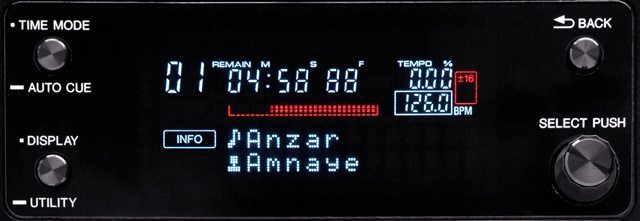
So what’s missing? Well, that beatgrid display is in place of any kind of waveform. A DJ coming to the 350s from the software world might find that a little disconcerting. There’s no link – so you’ll need to use two USB sticks with the players, and there won’t be any kind of shared history, which is always a blessing during long sets. The big feature which is lacking is access to cue points. Pioneer updated the firmware of the 350 to enable the first cue point which has been set in Rekordbox to be loaded automatically, instead of the regular auto cue, but if that’s not the cue point you want, you’re out of luck.
The Pioneer CDJ-350 costs about $599 (Amazon).
CDJ-850 – Middle of the Road?
The CDJ-850 is a definite upgrade (in most respects) from the 350. Featuring a ‘standard’ CDJ size jog wheel, the layout is largely identical to the flagship players. The screen, whilst not approaching the quality of the 2000/900 Nexus, has one extra line of text compared to the 350, and offers a basic, but functional, waveform display. One step back from the 350 is the BPM display, with no decimal points. Some purists might think that a good thing, but it is a little jarring, as every other current player in the range has a single decimal place.
Overall, the 850 has much more to offer the DJ who plays in a more ‘vinyl’ style. As well as the bigger platter, with position indicator, you get adjustable start/stop time (on one knob) too, allowing for gradual wind-downs.
Cueing, is, in many ways, the killer upgrade from the 350. There are no hot cues, but multiple cuepoints and saved loops can be recalled from the player, one at a time. That’s one way to get quantised loops going on the 850; by saving them in the software, then loading them from USB. They aren’t quite as tight as on the 2000/900, but the in and out points should remain in pretty much the right place. Otherwise, the unit features no quantising whatsoever, which makes the onboard autoloop section on the top right rather hit and miss.
At this level, you’re still missing the link function, and the display just doesn’t compare to the more expensive models, but as you can score a pair of 850s for not much more than a single 2000 Nexus, they do sit in a fairly sweet spot in the range.
A Pioneer CDJ-850 will run about $699 (Amazon)
CDJ-900 Nexus – The 2K Killer?
The original CDJ-900 was a step up from the 850 in many ways, but ultimately pretty similar in terms of overall feel. The 900 Nexus is a different proposition altogether.
Like its forebear, it’s the cheapest model to feature the link feature, meaning you can chain up to four mixed & matched units (plus 2 laptops, and a DJM-900 Nexus mixer) together, and have them all share music, and beatgrid information.
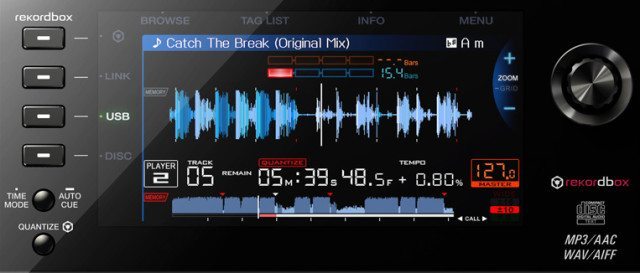
That’s a big deal, but the most noticeable improvement over the 850 is the simply gorgeous high-resolution screen. Offering both an overview waveform, for the entire track, and a larger zoomable waveform display, it will feel much more comfortable for users of Dj software, who are used to having detailed displays of this type for their music. The BPM display to one decimal point makes a return, after being missing from the 850 and the original 900, and Pioneer’s sync feature makes an appearance, for better or worse. For the record, it works very well, as long as your grids are set correctly in Rekordbox, and integrates seamlessly with the on-deck quantizing on the 900 Nexus.
Looping is pretty intuitive, with both manual and auto looping covered. It’s not quite as accessible as on the 2000 Nexus but plenty usable. In many respects the 900 Nexus is more about ‘trick mixing’ than the other models – the beat divide buttons and slip mode allow for some pretty interesting creative effects.
The CDJ-900 Nexus is available in the DJTT store for $1399.
CDJ-2000 Nexus – The Big Dawg
With the 900 Nexus being such an impressive player, many could look at the extra money a pair of CDJ-2000 Nexus demands as being a waste of money. In some respects, they might be right – truly, the improvements are kind of subtle, but for some DJs, they will be all-important.

Hot cues is the largest omission from the 900 Nexus, and they’re present on the 2000 Nexus. They’re much improved over the original 2000, too, as now you can set a preference in Rekordbox to load them automatically for each track. On the original, they were ‘there’, but you had to recall them to each button individually, which was a bit of a faff. You can also assign loops to the hot cue buttons too, which opens up some great creative possibilities.
All of the large CDJs have a level of tension on the jog wheel which doesn’t feel wildly dissimilar, but on the 2000 Nexus you do have the ability to tweak that to your own liking. Likewise, for vinyl-style DJs, the separate dials for adjusting start and stop times are a nice touch.
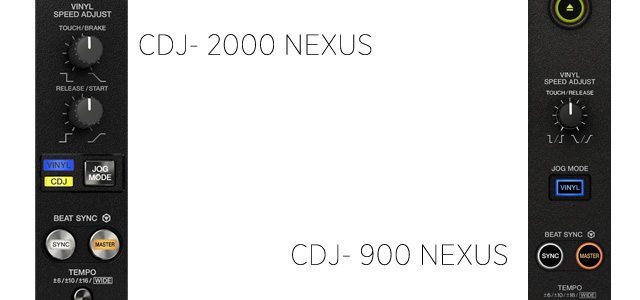
The first is the SD card slot. It can be a little disconcerting to see a larger USB drive, like a Sandisk Cruzer Extreme, sticking out of the top of a CDJ – what happens if a requester leans across it? So having your media safely tucked away in the player is reassuring. It also means that even with only two players, you can have four sources (2 USB, 2 SD) connected at once, allowing you to carry more music without dealing with an external hard drive.

The last is the touch strip – whilst Needle Search is rarely essential, it means you can enter loop mode and simply touch your desired auto loop length, and it also makes for much faster track searching. Touching one letter after another is a lot faster than ‘dialling in’ each letter as you have to with the other models.
If you want to score a CDJ-2000 Nexus, their street price is $1999 each (DJTT store).
Notes on HID
For this article we’ve looked primarily at using the CDJs with Rekordbox analysed files via USB or SD cards. Obviously all the models still work fine with CDs, too, although the majority of the features you’re paying for go unused. If all you want to do is play CDs, then frankly, a cheap pair of used CDJ-1000s will do the job just fine. Many of them out there have had a hard life, but they do tend to last, as evidenced by the numbers still found in DJ booths today.
If you still want to use your existing DJ software with CDJs, without needing timecode CDs, then you’ll need to pay careful attention to how compatible your software is with each model.
Mixvibes and VirtualDJ will play nicely with the whole range, as will Serato DJ, which includes compatibility with the 900 Nexus in the latest version. Native Instruments recently added support for the CDJ 900 Nexus and the new XDJ-1000 in Traktor Pro 2.8.
The 350 and 850 only feature ‘regular’ rather than ‘advanced’ HID, but in practice that really only means a lack of waveform display sent to the players from the software. You can use any of the range to control pretty much anything via midi, instead of HID, but we wouldn’t recommend it.
To be completely honest, if your sole intention is to use HID mode to control your software, then buying any of the CDJs is a rather large investment for what is, basically, a pair of big midi controllers, and you might want to think seriously about whether it’s worth it. It works well (Carl Cox uses four 2000 Nexus players linked to Traktor at all his gigs now), but it’s a huge, and probably unnecessary outlay for most DJs. Learn more about using CDJs in HID mode with Traktor or Serato.
Wrap Up

The current CDJ range features some wonderful kit, although none of the models are ‘perfect’, for sure. The 2000 Nexus comes close, but with 2 of them running the price of a decent used car, they really ought to. If you can live without hot cues, then the 900 Nexus is a fine investment, offering an experience very close to the 2000 Nexus with a pretty substantial cost saving.
The 350s will make for a good starter setup, offering enough functions to get anyone mixing on a basic level, and allowing beginners to join the Rekordbox ecosystem at a (relatively) bargain price.
Of the current range, the one that sticks out most in 2014 is the CDJ-850. The lack of quantizing for loops, and the basic screen, make it feel like a big step down from the 900 Nexus, even if you can live without the link feature. This is pure speculation, but it would not be surprising to see a ‘Nexus’ update to the 850 soon enough, so if you’re shopping at that mid-range pricepoint, you might want to wait until at least the holiday season to see if Pioneer drops something new.


